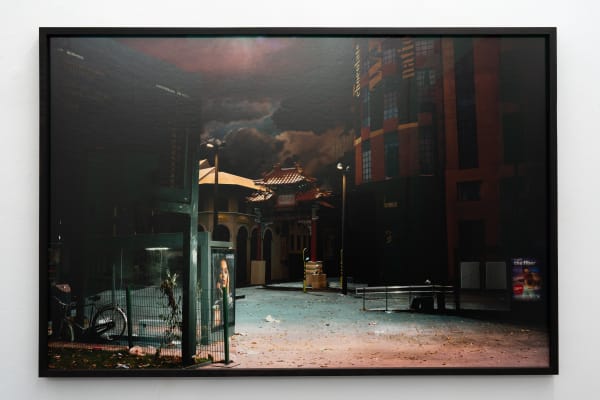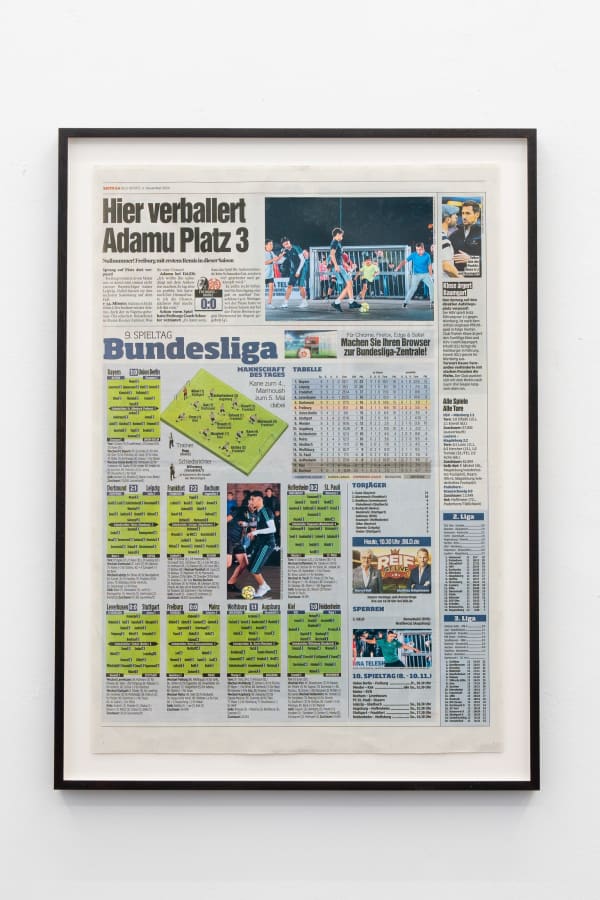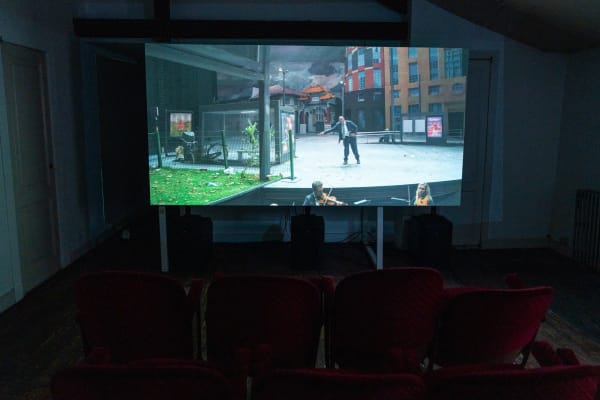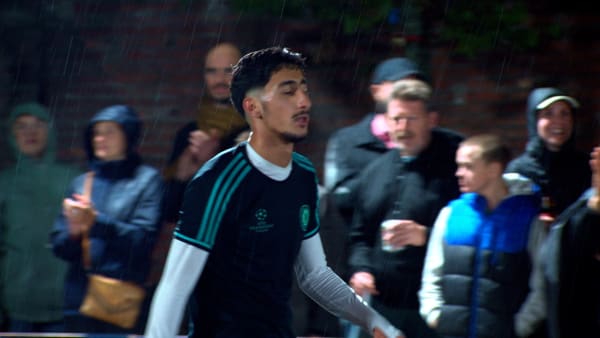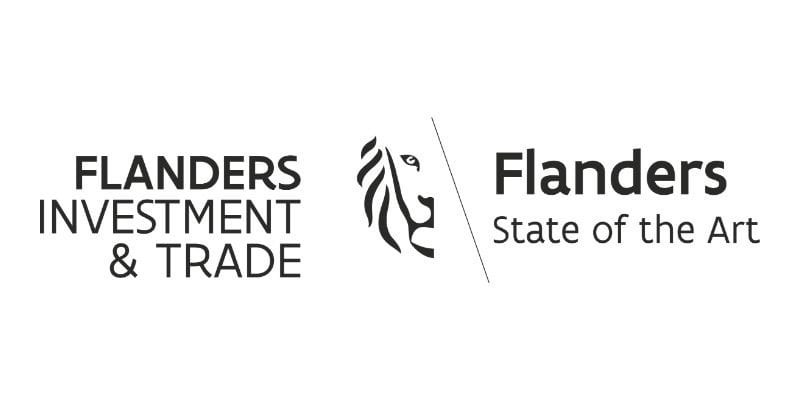-
 Thomas VerstraetenUrbi et Orbi #1, 2024Print Barytha, framed142.9 x 96.2 cmEdition of 3 plus 2 artist's proofs
Thomas VerstraetenUrbi et Orbi #1, 2024Print Barytha, framed142.9 x 96.2 cmEdition of 3 plus 2 artist's proofs -
 Thomas VerstraetenUrbi et Orbi #2, 2024Print Barytha, framed142.9 x 96.2 cmEdition of 3 plus 2 artist's proofs
Thomas VerstraetenUrbi et Orbi #2, 2024Print Barytha, framed142.9 x 96.2 cmEdition of 3 plus 2 artist's proofs -
 Thomas Verstraeten21st Century Portrait - News USA, 2024Newspapercollage Framed35.1 x 42.5 cm
Thomas Verstraeten21st Century Portrait - News USA, 2024Newspapercollage Framed35.1 x 42.5 cm -
 Thomas Verstraeten21st Century Portrait - News EN, 2024Newspapercollage Framed35.3 x 42.5 cm
Thomas Verstraeten21st Century Portrait - News EN, 2024Newspapercollage Framed35.3 x 42.5 cm -
 Thomas Verstraeten21st Century Portrait - News ES, 2024Newspapercollage Framed36.7 x 42.5 cm
Thomas Verstraeten21st Century Portrait - News ES, 2024Newspapercollage Framed36.7 x 42.5 cm -
 Thomas Verstraeten21st Century Portrait - News DE, 2024Newspapercollage framed64.1 x 46.7 cm
Thomas Verstraeten21st Century Portrait - News DE, 2024Newspapercollage framed64.1 x 46.7 cm -
 Thomas VerstraetenUrbi et Orbi - Model, 2024Cardboard, paper, glue, wood, plexiglass
Thomas VerstraetenUrbi et Orbi - Model, 2024Cardboard, paper, glue, wood, plexiglass
35 x 35 x 35 cm -
 Thomas Verstraeten21st Century Project - Model, 2024Cardboard, paper, glue, wood, plexiglass
Thomas Verstraeten21st Century Project - Model, 2024Cardboard, paper, glue, wood, plexiglass
35 x 35 x 35 cm -
 Thomas VerstraetenMythe van Sisyfus - Model, 2024Cardboard, paper, glue, wood, plexiglass
Thomas VerstraetenMythe van Sisyfus - Model, 2024Cardboard, paper, glue, wood, plexiglass
35 x 35 x 35 cm -
 Thomas VerstraetenBloedworst en Fladder - Model, 2024Cardboard, paper, glue, wood, plexiglass
Thomas VerstraetenBloedworst en Fladder - Model, 2024Cardboard, paper, glue, wood, plexiglass
35 x 35 x 35 cm -
 Thomas VerstraetenMet de krik ketsen - Model, 2024Cardboard, paper, glue, wood, plexiglass
Thomas VerstraetenMet de krik ketsen - Model, 2024Cardboard, paper, glue, wood, plexiglass
35 x 35 x 35 cm -
 Thomas VerstraetenMet de krik ketsen, 2024Painting617 x 137 mm.
Thomas VerstraetenMet de krik ketsen, 2024Painting617 x 137 mm. -
 Thomas VerstraetenMet de krik ketsen, 2024Video6'18''Edition of 3 plus 2 artist's proofs
Thomas VerstraetenMet de krik ketsen, 2024Video6'18''Edition of 3 plus 2 artist's proofs -
 Thomas VerstraetenUrbi et Orbi, 2024Video31'16''Edition of 3 plus 2 artist's proofs
Thomas VerstraetenUrbi et Orbi, 2024Video31'16''Edition of 3 plus 2 artist's proofs -
 Thomas VerstraetenLooking for Harmony, 2024Video13'50''Edition of 3 plus 2 artist's proofs
Thomas VerstraetenLooking for Harmony, 2024Video13'50''Edition of 3 plus 2 artist's proofs -
 Thomas Verstraeten21st Century Portrait, 2024Video7'54''Edition of 3 plus 2 artist's proofs
Thomas Verstraeten21st Century Portrait, 2024Video7'54''Edition of 3 plus 2 artist's proofs -
 Thomas Verstraeten21st Century Portrait - shirts, 2024Polyester, cotton, elastaneVariable
Thomas Verstraeten21st Century Portrait - shirts, 2024Polyester, cotton, elastaneVariable
only for sale along with the video '21st Century Portrait' -
 Thomas VerstraetenFloor Seefhoek-Patchwork, 2024VeloursVariable
Thomas VerstraetenFloor Seefhoek-Patchwork, 2024VeloursVariable
-
 Thomas VerstraetenLion Chinese gate / Perspective, 2024Ready made/ Found object, wood43 x 29 x 69 cm
Thomas VerstraetenLion Chinese gate / Perspective, 2024Ready made/ Found object, wood43 x 29 x 69 cm -
 Thomas VerstraetenStraatlantaarn perspectief, 2024Wood electronics led
Thomas VerstraetenStraatlantaarn perspectief, 2024Wood electronics led -
 Thomas VerstraetenChanel ad / Perspective, 2024Wood, electronics, leds, mixed media5.5 x 180 x 116 cm
Thomas VerstraetenChanel ad / Perspective, 2024Wood, electronics, leds, mixed media5.5 x 180 x 116 cm -
 Thomas VerstraetenVerkeerslicht Groen / Perspectief, 2024Wood , electronics, led11.5 x 22 x 129.5 cm
Thomas VerstraetenVerkeerslicht Groen / Perspectief, 2024Wood , electronics, led11.5 x 22 x 129.5 cm -
 Thomas VerstraetenPerspectiefvuilbakken antwerp, 2024Wood, trashLarge Dumpster:
Thomas VerstraetenPerspectiefvuilbakken antwerp, 2024Wood, trashLarge Dumpster:
41 x 31 x 101 cm
Small Dumpster:
31,5 x 24 x 67 cm

